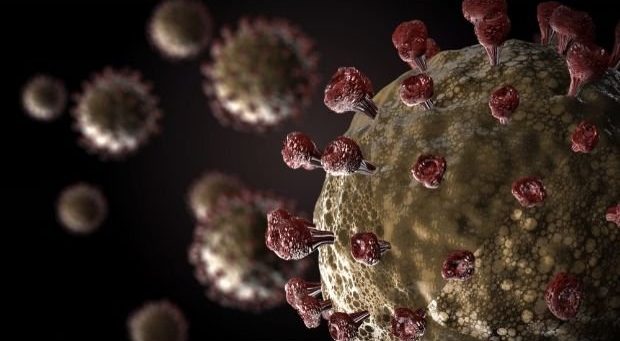
Stock image of SARS-CoV-2, the coronavirus that causes the deadly respiratory illness COVID-19. INQUIRER FILES
MANILA, Philippines — The COVID-19 positivity rate in Metro Manila further declined to 5.8% during the first week of 2023, according to an independent pandemic monitor.
Octa Research Group fellow Dr. Guido David on Tuesday said that the positivity rate in the country’s capital region decreased to 5.8% as of January 7 from 9.1% as of December 31, 2022.
Positivity rates in other provinces, including Batangas, Bulacan, Ilocos Norte, and Pangasinan, reached “low levels,” the group added.
This, it also noted, was in contrast to Albay and Isabela which registered “high” COVID-19 positivity rates in the same period.
“NCR 7-day positivity rate in NCR decreased from 9.1% as of Dec 31 2022 to 5.8% as of Jan 7, 2023. Positivity rates in Batangas, Bulacan, Ilocos Norte, Pangasinan reached LOW levels while Albay, Isabela still at HIGH,” David wrote on Twitter.
NCR 7-day positivity rate in NCR decreased from 9.1% as of Dec 31 2022 to 5.8% as of Jan 7 2023. Positivity rates in Batangas, Bulacan, Ilocos Norte, Pangasinan reached LOW levels while Albay, Isabela still at HIGH. #COVID19 #COVID @dzbb @DZAR1026 @ali_sotto @dzrhnews @allangatus pic.twitter.com/nnmgST2oNV
— Dr. Guido David (@iamguidodavid) January 10, 2023
In same Twitter post, David attached a list of areas with their corresponding coronavirus positivity rates as of January 7. The list shows the following:
- Albay – 25.6%
- Bataan – 6.3%
- Batangas – 4.9%
- Benguet – 5.3%
- Bulacan – 3.5%
- Cagayan – 7.0%
- Camarines Sur – 15.2%
- Cavite – 5.5%
- Ilocos Norte – 4.3%
- Isabela – 35.1%
- La Union – 5.5%
- Laguna – 7.3%
- Nueva Ecija – 11.2%
- Pampanga – 5.5%
- Pangasinan – 4.3%
- Quezon – 6.4%
- Rizal – 10.9%
- Tarlac – 11.2%
- Zambales – 8.4%
According to the Department of Health (DOH), 3,127 more people in the country contracted COVID-19 during the first week of January 2023.
READ: COVID-19 hits 3,127 more in PH during first week of 2023
In a weekly report released Monday, January 9, the DOH noted that the new cases were recorded from January 2-8 and that only seven or 0.23 percent of them were classified as severe or critical – bringing the number of active severe or critical patients to 507.